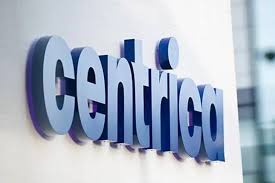BlackRock Energy and Resources Income Trust plc (LON:BERI) has announced its final results for the year ended 30 November 2022.
For more information on BlackRock Energy and Resources Income Trust and how to access the opportunities presented by the energy and resources markets, please visit www.blackrock.com/uk/beri
PERFORMANCE RECORD
| As at 30 November 2022 | As at 30 November 2021 | Change % | |
| Net assets (£000)1 | 194,708 | 120,828 | 61.1 |
| Net asset value per ordinary share (pence) | 144.92 | 103.97 | 39.4 |
| Ordinary share price (mid-market) (pence) | 135.00 | 96.70 | 39.6 |
| Discount to net asset value2 | 6.8% | 7.0% | |
| ========== | ========== | ========== | |
| Performance (with dividends reinvested) | |||
| Net asset value per share2 | 44.5% | 34.4% | |
| Ordinary share price2 | 44.8% | 41.7% | |
| ========== | ========== |
| For the year ended 30 November 2022 | For the year ended 30 November 2021 | Change % | |
| Revenue | |||
| Net profit on ordinary activities after taxation (£000) | 6,394 | 5,704 | 12.1 |
| Revenue earnings per ordinary share (pence)3 | 4.99 | 4.96 | 0.6 |
| Dividends (pence) | |||
| 1st interim | 1.10 | 1.00 | 10.0 |
| 2nd interim | 1.10 | 1.00 | 10.0 |
| 3rd interim | 1.10 | 1.00 | 10.0 |
| 4th interim | 1.10 | 1.10 | 0.0 |
| Total dividends paid and payable | 4.40 | 4.10 | 7.3 |
| ========== | ========== | ========== |
1 The change in net assets reflects portfolio movements, the issue of shares and dividends paid during the year.
2 Alternative Performance Measures, see Glossary contained in the Annual Report for the year ended 30 November 2022.
3 Further details are given in the Glossary contained in the Annual Report for the year ended 30 November 2022.
Chairman’s statement
Market overview
As the Company’s financial year began on 1 December 2021, markets were buoyant with many major indices achieving either all-time highs or pre-COVID-19 levels. However, supply constraints coupled with increasing demand as post-COVID-19 economic activity restarted, caused inflation to rise sharply. An already challenging market environment was exacerbated by Russia’s invasion of Ukraine and the resulting humanitarian crisis. The energy supply shock that resulted drove energy prices ever higher, pushing inflation to a 40 year high of 10.7% in the UK in November 2022. In response, the Bank of England raised interest rates to 3.50% by December 2022 with further increases on the horizon which are likely to impact consumer confidence in the UK.
Against this backdrop, the Traditional Energy sector had the strongest start to the year in both relative and absolute terms (the MSCI World Energy Index was up by 68.7% over the year compared to an increase in the MSCI ACWI Metals and Mining Index of 14.8% – both in Sterling terms with dividends reinvested). In contrast the Energy Transition portion of the portfolio performed less well as margins were impacted by cost inflation, and a “growth” to “value” rotation drove a sell-off in share prices in high growth sectors. Your Company’s portfolio was well-positioned to weather these trends, as the portfolio managers had increased Traditional Energy exposure through 2021 and into 2022 to stand at 31.0% at the end of the year, and moved to lower weighting in the Energy Transition sector (21.9% at 30 November 2022).
Performance
I am pleased to report that your Company has delivered another year of exceptional performance, with the Net Asset Value per share up by an impressive 44.5% and the share price by 44.8%. When combined with the strong prior year performance to 30 November 2021, your Company’s share price has increased by 105.1% over the last two financial years (all percentages in Sterling terms with dividends reinvested). The Company’s objectives are to achieve both an annual dividend target and, over the long term, capital growth. Consequently, the Board does not formally benchmark performance against mining and energy sector indices as meeting a specific dividend target is not within the scope of these indices. However, to set the performance above in the context of the market backdrop, the MSCI All-Country World Index (“ACWI”) was up 18.6% over the year ended 30 November 2021 and the same index was down 3.5% over the year ended 30 November 2022 (all percentages in Sterling terms with dividends reinvested).
As noted above, the Board does not formally benchmark the Company’s performance against Mining and Energy sector indices; for internal monitoring purposes, however, the Board compares the performance of the portfolio against a bespoke internal Mining and Energy composite index. The neutral sector weightings of this bespoke index are 40% Mining, 30% Traditional Energy and 30% Energy Transition.
Further information on investment performance is given in the Investment Managers’ Report.
| Cumulative performance as at 30 November 2022 | |||||
Performance to 30 November 2022 | 1 Year change % | 2 Years change % | 3 Years change % | 5 Years change % | Since inception2 % |
| Net Asset Value (with dividends reinvested)1 | 44.5 | 94.2 | 121.2 | 139.3 | 253.8 |
| Share price (with dividends reinvested)1 | 44.8 | 105.1 | 138.0 | 132.8 | 229.6 |
| ========== | ========== | ========== | ========== | ========== |
1 Alternative Performance Measures. Further details of the calculation of performance with dividends reinvested are given in the Glossary contained in the Annual Report for the year ended 30 November 2022.
2 The Company was launched on 13 December 2005.
Revenue return and dividends
The Company’s revenue return per share for the year to 30 November 2022 was 4.99 pence per share, a 0.6% increase compared to the prior year earnings per share of 4.96 pence. The Board’s current target is to declare quarterly dividends of at least 1.10 pence per share in the year to 30 November 2022, making a total of at least 4.40 pence per share for the year as a whole. This target represents a yield of 3.3% based on the share price of 135.00 pence per share as at 30 November 2022, and 3.0% based on the share price at the close of business on 30 January 2023. The dividend target should not be interpreted as a profit forecast. The Board has decided to maintain the annual dividend target of at least 4.40 pence per share for the year to 30 November 2023. As a result the Board announced in December 2022 that it would pay a fourth quarterly dividend for the year to 30 November 2022 of 1.10 pence per share (making total dividend payment for the year of 4.40 pence per share).
The Company may also write options to generate revenue return, although the portfolio managers’ focus is on investing the portfolio to generate an optimal level of total return without striving to meet an annual income target and they will only undertake option transactions to the extent that the overall contribution is expected to be beneficial to total return.
Gearing
The Company operates a flexible gearing policy which depends on prevailing market conditions. The Company increased the overdraft facility to £35.0 million during the year and it is expected that gearing will not exceed 20% of the Group’s net assets. The maximum gearing used during the period was 12.3%, and the level of gearing at 30 November 2022 was 6.0%. Average gearing over the year to 30 November 2022 was 6.1%. For calculations, see the Glossary contained in the Annual Report for the year ended 30 November 2022.
Management of share rating
The Directors recognise the importance to shareholders that the Company’s share price should not trade at a significant premium or discount to NAV per share, and therefore, in normal market conditions, may use the Company’s share buyback, sale of shares from treasury and share issue powers to seek to address any imbalance in supply and demand for the Company’s shares in the market.
The Company’s shares traded at an average discount of 2.9% over the year. The shares started the year trading at a discount of 7.0%; this widened out to 9.2% in December 2021 but moved to trade consistently at a premium in January 2022, at which time (and with a premium established), the Company commenced selling its treasury shares and subsequently issuing new shares into market demand. During the year, the Company issued/sold 18,137,837 ordinary shares (of which 2,747,643 ordinary shares were sold from treasury) for net proceeds of £22,785,000. Since the year end and up to 30 January 2023, the Company issued 550,000 ordinary shares for net proceeds of £802,000. All shares were issued/sold at premiums to the prevailing NAV per share and were accretive to net assets. At the Company’s annual general meeting held on 15 March 2022, the Company was granted authority to allot up to 11,859,336 shares and/or sell the same amount of shares held in treasury on a non-pre-emptive basis (being equivalent to 10 per cent of share capital in issue at that time). However, given the ongoing volume of demand noted above, the Board sought shareholder approval for additional authority (approved by shareholders at a General Meeting on 26 May 2022) to allot and/or sell from treasury a further 12,844,039 ordinary shares on a non-pre-emptive basis over and above the 10% authority sought at the 2022 AGM. This action was taken to ensure that the Company could continue to be able to allot new shares to meet market demand and thereby help to manage the premium to NAV at which the shares were trading.
Subsequent to this, it was pleasing to note that in June 2022 the Company was promoted from the FTSE Fledgling Index into the FTSE Small Cap Index (and also therefore the FTSE All Share Index) which generated additional demand. Although macro events weighed on markets and the Company in the second half of the year, at the time of writing, the Company’s shares are trading at a premium again, with 550,000 shares having been issued over the last month. The Board notes that although the Company has in previous years sought authority from shareholders at the AGM to issue up to 10% of share capital with pre-emption rights disapplied, to the extent demand for the Company’s shares remains strong, there is a possibility that this will be insufficient to last until the AGM in 2024 and the Company will need to convene additional special General Meetings in order to request further authority. To minimise the cost to shareholders and to ensure the Company is positioned to issue into market demand on a timely basis, the Board is seeking additional shareholder authority at the forthcoming Annual General meeting to issue and allot new shares for an additional 10% over and above the 10% authority that is usually sought. These issuance and allotment authorities are structured as four separate resolutions; two seek to renew the Board’s power to sell shares from Treasury and/or to issue new shares, and to do so on a non pre-emptive basis up to 10% of the Company’s issued share capital, with two equivalent resolutions for an additional 10%. It should be noted that any shares issued will be a premium to the NAV per share. The Board believes these resolutions are in shareholders’ best interests and encourages shareholders to support them. There can be no certainty that issuance will continue at the same level; however by seeking this additional 10% authority concurrently with the usual 10% authority, your Board is seeking to ensure that the Company is position to allot new shares into market demand at minimal cost to shareholders. Such issuance will also increase the capital base over which the Company’s fixed costs are spread, reducing the Company’s ongoing charges ratio and further minimising costs for shareholders.
The Board is also mindful that there was significant volatility in markets over the second half of 2022, with markets correcting in late June 2022 as fears over the potential recessionary impact of central banks’ reaction to inflation pressures took hold; this created challenges for many investment companies with the average discount for the sector widened significantly. Your Board has monitored the market throughout this volatile period and, in conjunction with the Company’s broker, has given consideration to the possibility of buying back shares on a daily basis to the extent the Company’s shares were trading at a discount, although no shares were bought back during the period under review.
Placing Programme
As well as seeking authority to issue an additional 12,844,039 shares as described above, the Board also sought authority at the General Meeting on 26 May 2022 to allot on a non-pre-emptive basis up to 65 million ordinary shares pursuant to a Placing Programme (which would only proceed with the publication of a prospectus, if appropriate, in due course). This authority expires on the earlier of (i) the first anniversary of the date of the prospectus and (ii) the 2024 AGM. The Board took this step to ensure that the Company would not be as constrained in its ability to issue new shares to meet demand by the Prospectus Regulation. However, due to the turn in markets the Company ultimately did not utilise any of this authority during the year nor, therefore, did it need to publish a prospectus.
The Board does not currently anticipate exhausting the capacity under the aggregate 20% issuance authorities being sought at the AGM based on current issuance levels, but the Board keeps the situation under close review and take the necessary steps to ensure that a prospectus can be published on a timely basis if required such that the Company can continue to issue shares into market demand.
Board Composition
The Board supports the increasing focus on independence, tenure and succession planning set out in the updated Financial Reporting Council’s review of the UK Corporate Governance Code. With this in mind, the Board commenced a search in 2021 to identify a new Director to join the Board, assisted by a third-party recruitment firm, Odgers Berndtson. Following a detailed evaluation of each of the candidates, the Board selected Carole Ferguson who was subsequently appointed with effect from 22 December 2021. Mrs Ferguson was elected as a Director at the Annual General Meeting held on 15 March 2022.
Further information on all of the Directors can be found in their biographies contained in the Annual Report for the year ended 30 November 2022. Information on the recruitment and selection process undertaken and details of the Board’s policy on director tenure and succession planning can be found in the Directors’ Report contained in the Annual Report for the year ended 30 November 2022.
As previously advised in last year’s Annual Report, my predecessor, Ed Warner stood down from the Board at the AGM on 15 March 2022. Ed joined the Board in July 2013 and had acted as the Chair since March 2015. The Board wishes to thank Mr Warner for his many years of excellent service, and for leaving the Company with the solid base and clear direction, from which we can all continue to build the Company with confidence. We wish Ed the best for the future.
Annual general meeting arrangements
The AGM will be held in person at 12:00 noon on Monday, 13 March 2023 at the offices of BlackRock at 12 Throgmorton Avenue, London EC2N 2DL. Refreshments and a sandwich lunch will be provided.
At present UK Government restrictions on public gatherings are no longer in force in connection with COVID-19 and we therefore intend to hold the AGM in the normal way with physical attendance by shareholders. However, although unlikely, shareholders should be aware that it is possible that such restrictions could be reimposed if required prior to the date of the AGM and therefore we recommend that as well as physical attendance, shareholders also cast their votes by proxy to ensue that their votes are counted in the event that they are unable to attend.
Shareholders who intend to attend the AGM should ensure that they have read and understood the venue requirements for entry to the AGM. These requirements, along with further information on the business of this year’s AGM, can be found in the Directors Report contained in the Annual Report for the year ended 30 November 2022.
The Board very much looks forward to meeting shareholders and answering any question you may have on the day. We hope you can attend this year’s AGM; light refreshments will be made available to shareholders who have attended the AGM.
Market outlook and portfolio positioning
With the impact of the COVID-19 pandemic receding, the longer-term implications for the global economy are beginning to play out, compounded by increased geopolitical tensions. Commodity prices remain elevated, partly due to the war in Ukraine and the continued sanctions on Russia, while labour markets remain tight, underpinning higher inflation trends in the US and Europe. This has put increasing pressure on central banks to raise interest rates, increasing the risks to economic growth. However, either way, it is likely that inflation remains entrenched above central bank targets for some time to come. Against a weakening economic outlook, the company’s portfolio remains weighted towards well-capitalised companies in the mining and traditional energy sector with scope to reinvest in growth opportunities in the energy transition sector which has derated over the last year.
Against this volatile and uncertain market backdrop, the flexibility of the Company’s investment mandate, with the ability to shift exposure between Traditional Energy, Energy Transition and Mining sectors, means it is effectively positioned to serve investors well. Despite the current uncertainty, the longer-term drive by governments across the globe to decarbonise the energy supply chain and create a greener energy infrastructure is here to stay, and has been given increased focus by the events in Ukraine. Over the long term, capital investment in the relevant infrastructure and technological advances will create compelling investment opportunities both in the Energy Transition sector and for the companies that service the associated supply chains. The Board is confident that the Company remains well-placed to benefit from these key investment trends.
I look forward to seeing shareholders at the forthcoming Annual General Meeting.
Adrian Brown
1 February 2023
Investment Manager’s report
Market overview
The phrase “paradigm shift” is often over-used but it seems entirely appropriate when reflecting on the investment landscape in 2022. For much of the prior decade, markets have been characterised by low inflation, very low interest rates and relatively abundant, cheap energy with the many benefits this enabled. The last year has seen a major shift in these three factors with profound impacts on major financial asset classes and individual securities, as well on society more broadly. We now look set to enter a phase of the market cycle where inflation will be more of a factor, energy availability will be a critical question facing countries/industries and also capital will come with a higher cost.
This is going to require investors to find lessons further back in history than just the last ten years and have portfolios that are able, and willing, to adapt to changing circumstances. We would assert that the evolution of this Company’s strategy almost 3 years ago puts it in such a position to take advantage of the investment opportunities that invariably come with times of rapid change.
The geopolitical events of early 2022 accelerated and magnified trends already present in parts of the energy market where underinvestment had left little spare capacity and even less resilience to any external shock or supply disruption.
One of the consequences of the most recent energy crisis has been to raise the question of energy security in many countries. The short-term responses vary between countries, but one of the clear longer-term consequences is a hardened resolve to transition to a greater share of renewable energy and to accelerate the energy transition. Legislation such as the Inflation Reduction Act in the USA is a demonstration of how willing governments are to ensure the correct incentives are in place to incentivise private capital to be deployed on a large scale across multiple industries that need to transition to lower carbon footprints. Some of the growth stocks in the equity market, that are exposed to the energy transition, have come under short-term selling pressure with rising interest rates supressing the market’s appetite for growth stocks. However, the regulatory backdrop and the economics of transition technologies likely underpins longer-term earnings growth here, so for the Company, it is likely a matter of when, rather than if, we increase the exposure to these energy transition companies.
| Commodity | 30 November 2022 | 30 November 2021 | % change | 2022 on 2021 Average Price % Change1 |
| Base Metals (US$/tonne) | ||||
| Aluminium | 2,448 | 2,635 | -7.1 | 13.1 |
| Copper | 8,227 | 9,516 | -13.5 | -2.5 |
| Lead | 2,182 | 2,318 | -5.9 | -0.7 |
| Nickel | 26,892 | 20,005 | 34.4 | 40.0 |
| Tin | 23,045 | 39,905 | -42.3 | 6.4 |
| Zinc | 3,050 | 3,289 | -7.3 | 19.0 |
| —————- | —————- | —————- | —————- | |
| Precious Metals (US$/ounce) | ||||
| Gold | 1,751.9 | 1,780.1 | -1.6 | -0.2 |
| Silver | 21.7 | 22.8 | -5.0 | -14.3 |
| Platinum | 1,025.0 | 944.0 | 8.6 | -12.8 |
| Palladium | 1,908.0 | 1,767.0 | 8.0 | -13.8 |
| —————- | —————- | —————- | —————- | |
| Energy | ||||
| Oil (WTI) (US$/barrel) | 80.5 | 66.2 | 21.6 | 43.3 |
| Oil (Brent) (US$/barrel) | 85.6 | 70.6 | 20.8 | 46.1 |
| Natural Gas (US$/Metric Million British Thermal Unit) | 7.0 | 4.6 | 54.9 | 65.7 |
| —————- | —————- | —————- | —————- | |
| Bulk Commodities (US$/tonne) | ||||
| Iron ore | 103.0 | 100.0 | 3.0 | -26.0 |
| Coking coal | 265.0 | 317.5 | -16.5 | 62.0 |
| Thermal coal | 398.5 | 152.0 | 162.2 | 161.9 |
| —————- | —————- | —————- | —————- | |
| Equity Indices | ||||
| MSCI ACWI2 Metals and Mining Index (US$) | 369.8 | 357.7 | 3.4 | n/a |
| MSCI ACWI2 Metals and Mining Index (£) | 516.6 | 449.9 | 14.8 | n/a |
| MSCI3 World Energy Index (US$) | 255.5 | 168.3 | 51.8 | n/a |
| MSCI3 World Energy Index (£) | 356.9 | 211.6 | 68.7 | n/a |
| ========== | ========== | ========== | ========== |
Source: Datastream.
1 Average of 01/12/20-30/11/21 to 01/12/21-30/11/22
2 Morgan Stanley Capital International All Country Weighted Index
3 Morgan Stanley Capital International
Portfolio activity & investment performance
In contrast to the challenges faced by broader equity markets and the deluge of negative headlines through the year, the Company delivered another excellent year of returns, with shareholders experiencing a share price total return of 44.8% and NAV total return of 44.5% (all percentages are in British Pound Sterling with dividends reinvested).
In the second half of the year, oil markets steadily sold off from over US$110 per barrel at the end of May to US$80 per barrel by the Company’s year-end. However traditional energy equities held up remarkably well, with a wide performance differential versus the underlying commodity as shown in Figure 1 contained in the Annual Report for the year ended 30 November 2022.
Given this dislocation, we reduced the percentage of the Company’s assets invested in traditional energy companies in the latter part of the year and also rotated some of the holdings within the traditional energy holdings to reduce the oil price sensitivity (commodity beta) of the portfolio.
Also in terms of reducing positions in the second half of the year, we pared back some of our lithium mining exposure. As discussed in the Mining section later in this report, lithium prices had a terrific year and the lithium producing equities performed extremely well. With two of the three main Electric Vehicles (EV) subsidies in China set to finish at the end of 2022 and a gloomy outlook for US discretionary spending, we took profits but retained some modest positions.
On the other side of these sales, we added to holdings in some of our energy transition and other mining companies. Given the underperformance of growth companies versus value companies over the last year, a number of energy transition companies that we see as long-term winners had become meaningfully cheaper in terms of earnings multiples towards the end of the period. Whether we have timed the exact bottom here remains to be seen but we are confident that on a longer-term view, the recent entry points will prove to be attractive. Regarding mining, again it is tough to pick a precise turning point in China given the key driver there is government policy regarding COVID-19 restrictions. However, there was a clear pivot during the fourth quarter of 2022, which gave us the confidence to add to a number of mining positions where the underlying commodities will likely benefit from better real estate and infrastructure activity in China in 2023.
Income
This year was a strong year for the Company’s income. The strength of commodity prices, in particular energy commodities, combined with the financial discipline of the companies, resulted in a plethora of ordinary dividend increases and special dividends. The decision to be overweight in traditional energy companies for most of the period also helped boost the dividend income received, as this overweight was funded by an underweight to energy transition companies, which typically pay meagre dividends.
The income received by the Company was also helped during the year by a weaker British Pound Sterling. The average US Dollar – British Pound Sterling exchange rate for 2022 was $1.24, compared to $1.38 for 2021. With most of the Company’s portfolio companies paying dividends in US Dollars, this was a helpful tailwind for income.
As discussed elsewhere in this report, the balance sheets of the mining companies and traditional energy companies remain in great shape. However, given the recent pullback in oil prices and the incremental increases in capital expenditure guidance from mining companies for 2023, the probability of further dividend increases next year is quite low.
As in 2021, option activity was relatively modest in 2022 when compared to the late 2010s for the Company. The market volatility presented a number of attractive put writing opportunities during the year that we took advantage of. These trades were typically quite well-timed with only a minority of the options maturing in the money and being exercised against us.
Mining
If you had known at the start of 2022 that China, the world’s largest consumer of mined commodities, would remain in various states of lockdown through almost the entire year then it is highly likely you would have forecast a tough year for the mining sector. Whilst the sector did only deliver a modest positive return, it was still better than broader markets with the MSCI Metals and Mining Index total return of +10.0% compared to the S&P 500 Index total return of -9.2% and the FTSE 100 Index total return of -3.4% (all in US$, total return for the year ended 30 November 2022). Encouragingly, the Company’s mining holdings performed very well during the year too – so what drove the strong performance despite much of China’s real estate sector being weak throughout the year?
There were two key factors – supply challenges persisted across a number of commodities and demand for those commodities related to the energy transition surprised even the most optimistic of forecasts.
Looking more closely at the first driver – the supply challenges. We noted these in the interim report, specifically in relation to copper supply falling short of expectations from large producers such as Chile. These disappointments were not just isolated to Chile – as the chart in Figure 2 contained in the Annual Report for the year ended 30 November 2022 shows, copper companies with operations across the world downgraded production guidance relative to their aspirations at the start of the year.
We are not seeing this reverse – those companies that have guided for 2023 have so far tended to bring down numbers again compared to previous guidance as shown in the chart in Figure 3 contained in the Annual Report for the year ended 30 November 2022. This is likely to lead to a deficit of supply relative to demand again in 2023, which will tighten global inventories and be supportive of copper prices.
Looking out beyond 2023 does not offer much relief on the supply side for copper. The lack of significant discoveries in the last decade, the challenges to permit new mines and the discipline of companies have all combined to result in a ripple, rather than a wave, of new supply. This can be seen in the chart in Figure 4 contained in the Annual Report for the year ended 30 November 2022 it is worth noting that the copper market has grown a few percent a year over the last 20 years so as a proportion of supply/demand, the chart would be even more extreme.
Given the scarcity of good quality copper assets, we saw M&A in this space again during the second half of the year. BHP made an approach for Australian-focused copper miner OZ Minerals that was initially rebuffed but a higher offer, conditional on due diligence, was later accepted by their board. The Company was a holder of OZ Minerals having also generated income via put option selling after the first bid was deemed insufficient. With this scarcity of copper assets likely to get more acute over the next decade, the Company also took positions in two earlier stage copper companies, that have exploration and development potential, and crucially have proven management teams/boards, something often lacking at the smaller end of the market.
The second positive tailwind for the mining sector was the continued growth in demand for mined commodities from energy transition related applications. Battery related metals, in particular lithium, enjoyed huge price increases during the year as demand from electric car manufacturers drove prices to all-time highs (as shown in the chart in Figure 5 contained in the Annual Report for the year ended 30 November 2022). The price at the end of the year is well above the incentive price to encourage the development of new supply. However with all of the challenges of permitting new mines, financing them and then constructing them, we would expect the lithium price to remain well above the top end of the cost curve for years to come.
Energy Transition
Macro events once again played an important role in shaping price performance across the energy transition universe. On the one hand, persistently higher-than-expected inflation shown in the chart in Figure 6, contained in the Annual Report for the year ended 30 November 2022, has continued to cause margin headwinds for many of the renewables and autos manufacturers. On the other hand, the unprecedented rise in interest rates across the curve has placed downward pressure on valuation multiples for longer-duration growth stocks, many of which reside in the energy transition space.
Energy policy has also played a hand in 2022. The Biden Administration announced the Inflation Reduction Act (IRA) during the summer. The IRA will direct nearly $400 billion in federal funding towards clean energy and, according to a McKinsey1 article, “represents the third piece of legislation passed since late 2021 that seeks to improve US economic competitiveness, innovation and industrial productivity”. Several tax credit modifications have been included in the IRA including production credits for nuclear ($15/megawatthours) and subsidies for hydrogen ($3/kilogram). Interestingly, many of the IRA incentives contain criteria which proactively reward investments which encourage extraction, processing and manufacturing in the United States. This provided a significant positive tailwind to stocks with exposure to solar, wind and hydrogen with the S&P Global Clean Energy Index jumping almost 20% following the initial announcement as shown in the chart in Figure 7 contained in the Annual Report for the year ended 30 November 2022.
Russia’s invasion of the Ukraine in February upended global energy and power markets. Prices for natural gas in the UK hit record highs in recent weeks as shown in the chart in Figure 8 contained in the Annual Report for the year ended 30 November 2022 as Europe struggles to fully replace Russian gas imports. Europe faces a tough few years ahead as it weans itself off Russian natural gas imports. Natural gas prices impact both power prices and industrial feedstock costs, and Europe’s ‘energy burden’ has increased far in excess of the United States; as shown in the chart in Figure 9 contained in the Annual Report for the year ended 30 November 2022, leaving the latter in a much stronger position both in terms of the energy transition and of industrial competitiveness. In order to combat soaring energy costs, European policy makers enacted several measures aimed at capping prices and providing subsidies to consumers ahead of peak demand in winter. Whilst gas demand has retrenched by almost 25% in recent months (relative to the prior five-year average), markets remain at the mercy of weather. We expect gas and power market tightness to keep prices high right the way through next winter.
Traditional Energy
Through November 2022, the traditional energy sector posted another strong positive total shareholder return, up +45.0% as shown in the chart in Figure 10 contained in the Annual Report for the year ended 30 November 2022, following +38.0% in the prior fiscal year. The MSCI All-Country World Index (ACWI) was down – 11.0% and up +20.0% over the same periods. With a strong tailwind from rising commodity prices, a continued focus on cost savings and material stock buybacks, the traditional energy sector posted some of the strongest positive cash flow per share revisions in its history, explaining a large proportion of its positive absolute performance, as shown in the chart in Figure 11 contained in the Annual Report for the year ended 30 November 2022.
As we outlined last year, a key pillar of our investment case for traditional energy was that of discipline. Following more than a decade of poor returns on and of capital, the energy sector was finally on a path to moderate spending, reduce leverage and return excess free cash flow to long-suffering investors. Management teams are increasingly incentivised to focus on per share metrics rather than topline growth. The result has been increasing cash flow and, in turn, improved stock price performance.
One other notable change in company strategy in the last 2 years has been the amount of capital now being allocated towards lower carbon business opportunities. The pace of investment into these areas should not be overlooked, as more oil and gas companies start to lean into the energy transition, seeking to meet customers’ needs to reduce their own carbon footprints. Capital investment into energy projects is also rising as shown in the chart in Figure 12 contained in the Annual Report for the year ended 30 November 2022, albeit not at the same pace as activity levels, as the North American energy industry faces its own inflation challenges. The US-focused upstream Exploration and Production sector as shown in the chart in Figure 13 contained in the Annual Report for the year ended 30 November 2022, are facing double digit service cost inflation which, in the absence of sharply higher commodity prices, is likely to see free cash flows under pressure in 2023.
From a regional perspective, the divergence in performance between European Energy companies and North American peers was stark. By way of example, ExxonMobil was up by +82% compared with Shell (up by +33% over the period). Part of this reflects the fact that the European Energy companies in aggregate cut dividends markedly during COVID-19, whilst large-cap North American peers did not suffer the same ignominy. Yield seeking investors were rightly chastened by this as European Energy companies had represented a bastion of income for a long time. We continue to believe that there is a material swathe of European investors that remain reluctant to own traditional energy companies based on their carbon footprint. Notwithstanding the challenges in negotiating these regulations, we continue to believe that many of these traditional energy companies can be a part of the solution rather than the sole root of the problem. Put simply, these companies can help investors navigate through the energy transition by providing secure, affordable energy today as well as profitably decarbonising for tomorrow.
Arguably the most important macro event in global energy markets was Russia’s invasion of Ukraine at the end of February. Europe’s reliance on Russian energy (and food) imports was laid bare sending natural gas and power prices to record levels. In stark contrast to natural gas and power prices, crude oil peaked in the summer of 2022, before retrenching back to pre-invasion levels. This partly reflects the fact that oil is more fungible and has largely found new markets as Europe instigated its ‘ban’ on Russian imports effective 5 December 2022. Substituting natural gas is far more challenging albeit not impossible. New sources are already making their way in from US Liquified Natural Gas as well as fresh investment stimulating higher imports from North Africa. But, all of this will take time, requiring demand to recalibrate lower in the next 1-2 years to help balance the market. Whilst governments have already pushed through price caps across gas and power markets and industrial users have ratcheted back consumption, residential consumers continue to respond to cold weather leaving higher prices the route to rebalancing markets as shown in the charts in Figure 8 and Figure 9 contained in the Annual Report for the year ended 30 November 2022.
Outlook
The year 2022 was marked by a flurry of unexpected events from the invasion of Ukraine to the replumbing of global energy markets, or the Federal Reserve’s pivot from quantitative easing to quantitative tightening. We continue to believe that inflation will be persistently higher than recent years as the world looks to replumb supply chains across multiple industries. All of this is set against a backdrop of continued geopolitical fragmentation. Yet, rapidly rising interest rates and the subsequent hit to equity values are gradually opening up some attractive opportunities across our investment universe, even as economic recession looms large across the globe.
Traditional commodities are in an unusual spot in the cycle. China is finally exiting COVID-19 induced lock downs. We doubt it will be a smooth restart across the Chinese economy but the underlying pull on demand for traditional commodities will cast a strong positive tailwind for oil prices as shown in Figure 14 contained in the Annual Report for the year ended 30 November 2022, with incremental oil demand in the coming months in the order of 0.5-1.0 million barrels per day as shown in Figure 15 contained in the Annual Report for the year ended 30 November 2022. This should be contrasted against recent downgrades to US shale oil production of almost 1.0 million barrels per day. Industrial mined commodities are also likely to be well supported as the Chinese economy regains its pre-COVID-19 levels and renewables demand for copper, nickel, lithium and aluminium continues apace. This comes at a time when investment in supply across the traditional commodities space remains at historic lows. Recent commentary from the US Administration stated an ambition to replenish the US Strategic Petroleum Reserve at oil prices between US$67-71 per barrel.
Policy will continue to be a strong driver of equity performance next year. Yet, the need to balance energy security with decarbonisation is set to drive diverging policy agendas in different regions. Indeed, we believe that in many instances policy ambitions around decarbonisation continue to run ahead of demand-side behaviour. This consumer inertia is causing severe bottlenecks across supply chains and a repricing of both traditional energy and electricity base load prices.
In Europe, for instance, energy security concerns have galvanised policy makers to strive for ever more ambitious renewables targets. Spurred by the invasion of the Ukraine, the 27 countries within the European Union will play a key role in driving an increase in global renewables capacity of almost 2,400GW through 2027 according to the IEA’s latest renewables report1. This represents an 85% acceleration from the previous five years, and almost 30% higher than what was forecast in last year’s report. Whilst this ambitious growth outlook bodes well for many of our companies, we are acutely aware that permitting remains a key impediment to expediting this growth.
TOM HOLL AND MARK HUME
BlackRock Investment Management (UK) Limited
1 February 2023
1 Source: IEA, Renewables 2022, IEA Paris
Distribution of investments as at 30 November 2022
ASSET ALLOCATION – GEOGRAPHY
| Global | 56.8% |
| United States of America | 19.2% |
| Canada | 10.3% |
| Brazil | 4.4% |
| Germany | 3.7% |
| Australia | 3.0% |
| Latin America1 | 1.7% |
| France | 0.5% |
| Ireland | 0.4% |
- Latin America represents Argentina.
ASSET ALLOCATION – COMMODITY
| Mining | 47.1% |
| Traditional Energy | 31.0% |
| Energy Transition | 21.9% |
| Energy Transition (21.9%) | |
| Energy Efficiency | 6.4% |
| Electrification | 6.3% |
| Renewables | 4.9% |
| Transport | 4.3% |
| Traditional Energy (31.0%) | |
| Exploration & Production | 16.2% |
| Integrated | 10.5% |
| Oil Services | 2.1% |
| Refining & Marketing | 1.2% |
| Distribution | 1.0% |
| Mining (47.1%) | |
| Diversified | 22.2% |
| Copper | 8.9% |
| Industrial Minerals | 6.0% |
| Aluminium | 3.6% |
| Steel | 2.4% |
| Gold | 1.1% |
| Diamonds | 0.9% |
| Uranium | 0.8% |
| Iron | 0.6% |
| Nickel | 0.6% |
Source: BlackRock.
Ten largest investments
1 + Glencore (2021: 2nd)
Diversified mining group
Market value: £15,024,000
Share of investments: 7.3% (2021: 5.8%)
One of the world’s largest globally diversified natural resource groups. The group’s operations include approximately 150 mining and metallurgical sites and oil production assets. Glencore’s mined commodity exposure includes copper, cobalt, nickel, zinc, lead, ferroalloys, aluminium, iron ore, gold and silver.
2 – Vale (2021: 1st)
Diversified mining group
Market value: £9,000,000
Share of investments: 4.4%1(2021: 5.9%)
One of the largest mining groups in the world, with operations in 30 countries. Vale is the world’s largest producer of iron ore and iron ore pellets, and the world’s largest producer of nickel. The group also produces manganese ore, ferroalloys, metallurgical and thermal coal, copper, platinum group metals, gold, silver, cobalt, potash, phosphates and other fertiliser nutrients.
3 + BHP (2021: 4th)
Diversified mining group
Market value: £8,667,000
Share of investments: 4.2% (2021: 3.8%)
The world’s largest diversified mining group by market capitalisation. The group is an important global player in a number of commodities including iron ore, copper, thermal and metallurgical coal, manganese, nickel, silver and diamonds. BHP also has significant interests in oil, gas and liquefied natural gas.
4 + Teck Resources (2021: 30th)
Diversified mining group
Market value: £7,516,000
Share of investments: 3.6% (2021: 1.4%)
A diversified mining group headquartered in Canada. Teck Resources is engaged in mining and mineral development with operations and projects in Canada, the US, Chile and Peru. The group has exposure to copper, zinc, steelmaking coal and energy.
5 + First Quantum Minerals (2021: 6th)
Copper producer
Market value: £7,128,000
Share of investments: 3.5%2(2021: 2.5%)
A Canadian-based mining and metals company whose principal activities include mineral exploration, development and mining. Its main product is copper.
6 + Shell (2021: n/a)
Integrated oil group
Market value: £6,698,000
Share of investments: 3.2% (2021: n/a)
A British publicly traded multinational oil and gas group headquartered in London. Shell is one of the world’s largest independent energy companies, operating in more than 70 countries. Shell explores and produces energy products – fuels, oil, natural gas, lubricants, LPG, chemicals; including 100% renewable electricity by Shell Energy.
7 + BP (2021: n/a)
Integrated oil group
Market value: £6,025,000
Share of investments: 2.9% (2021: n/a)
A British multinational oil and gas company headquartered in London. BP is one of the oil and gas “supermajors” and one of the world’s largest companies measured by revenues and profits. It is a vertically integrated company operating in all areas of the oil and gas industry, including exploration and extraction, refining, distribution and marketing, power generation, and trading; including low carbon businesses.
8 – ConocoPhillips (2021: 7th)
Exploration & Production
Market value: £5,570,000
Share of investments: 2.7% (2021: 2.7%)
An American multinational corporation engaged in hydrocarbon exploration. ConocoPhillips is one of the world’s largest independent Exploration & Production (E&P) companies based on production and proved reserves. It has operations in 15 countries and are committed to the efficient and effective exploration and production of oil and natural gas.
9 + NextEra Energy (2021: 53rd)
Electrification
Market value: £5,173,000
Share of investments: 2.5% (2021: 0.8%)
NextEra Energy is America’s premier clean energy leader and the world’s largest producer of wind and solar energy. The company has a dominant market share in a structurally growing renewables market.
10 + Canadian Natural Resources (2021: 12th)
Exploration & Production
Market value: £5,147,000
Share of investments: 2.5% (2021: 2.1%)
A senior Canadian oil and natural gas company. The company has a diversified portfolio of assets in North America, the UK North Sea and Offshore Africa.
1 1.1% relates to interest in Vale shareholder debentures.
2 1.5% relates to fixed interest holdings in First Quantum Minerals.
All percentages reflect the value of the holding as a percentage of total investments. For this purpose, where more than one class of securities is held, these have been aggregated. The percentages in brackets represent the value of the holding as at 30 November 2021.
Together, the ten largest investments represent 36.8% of total investments (ten largest investments as at 30 November 2021: 36.4%).
For more information on BlackRock Energy and Resources Income Trust and how to access the opportunities presented by the energy and resources markets, please visit www.blackrock.com/uk/beri






































